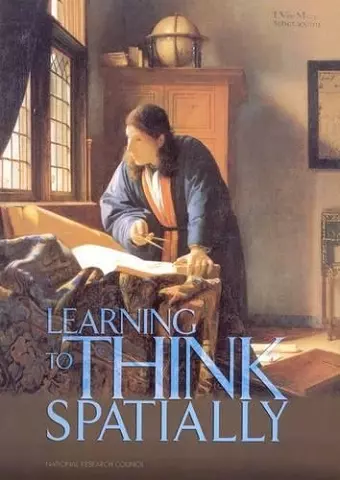Learning to Think Spatially
National Research Council author Division on Earth and Life Studies author Board on Earth Sciences and Resources author Geographical Sciences Committee author Committee on Support for Thinking Spatially: The Incorporation of Geographic Information Science Across the K-12 Curriculum author
Format:Paperback
Publisher:National Academies Press
Published:3rd Feb '05
Currently unavailable, and unfortunately no date known when it will be back

Learning to Think Spatially examines how spatial thinking might be incorporated into existing standards-based instruction across the school curriculum. Spatial thinking must be recognized as a fundamental part of K–12 education and as an integrator and a facilitator for problem solving across the curriculum. With advances in computing technologies and the increasing availability of geospatial data, spatial thinking will play a significant role in the information-based economy of the twenty-first century. Using appropriately designed support systems tailored to the K–12 context, spatial thinking can be taught formally to all students. A geographic information system (GIS) offers one example of a high-technology support system that can enable students and teachers to practice and apply spatial thinking in many areas of the curriculum.Table of Contents
- Front Matter
- Executive Summary
- 1 Introduction
- PART I: THE NATURE AND FUNCTIONS OF SPATIAL THINKING --2 The Nature of Spatial Thinking
- 3 Spatial Thinking in Everyday Life, at Work, and in Science
- 4 Teaching and Learning About Spatial Thinking
- 5 Responding to the Need for Spatial Thinking
- 6 Tools for Thought: The Concept of a Support System
- PART II: SUPPORT FOR SPATIAL THINKING--7 High-Tech Support Systems for Spatial Thinking
- 8 An Assessment of GIS as a System for Supporting Spatial Thinking in the K-12 Context
- 9 GIS as a Support System for Spatial Thinking
- PART III: SUPPORTING SPATIAL THINKING IN THE FUTURE--10 Conclusions and Recommendations
- 11 The Spatial Thinker
- References
- Appendix A Biographical Sketches of Committee Members and Staff
- Appendix B Oral Presentations and Written Statements
- Appendix C Individual Differences in Spatial Thinking: The Effects of Age, Development, and Sex
- Appendix D The Role of Spatial Representations in Learning, Problem Solving, and Transfer
- Appendix E Software Descriptions and Resources
- Appendix F What Is GIScience?
- Appendix G The Introduction of GIS into K–12 Education
- Appendix H Seasonal Differences: A Customized Eighth-Grade GIS Module
- Appendix I List of Acronyms
- Index
ISBN: 9780309092081
Dimensions: unknown
Weight: unknown
332 pages